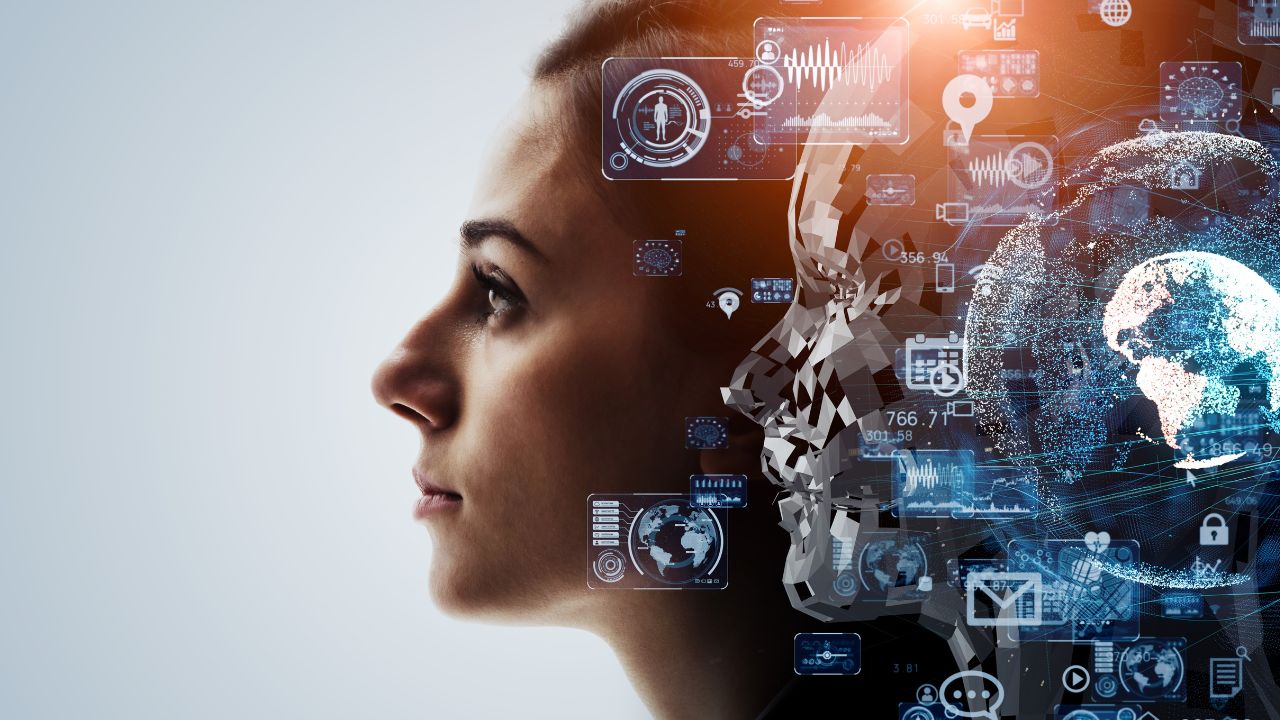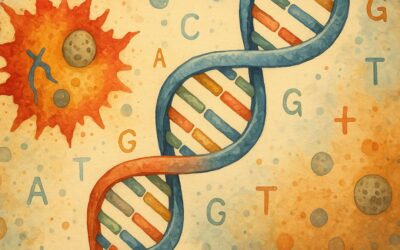- Artificial Intelligence: A Brief Overview
- Machine Learning: The Heart of AI Learning
- How Does Machine Learning Work?
- Neural Networks and Deep Learning
- Challenges and Future of AI Learning
- The Ever-learning AI
- Keywords
- Key Takeaways
- FAQs
- Can AI learn without data?
- What is the role of labeled data in supervised learning?
- How does unsupervised learning differ from supervised learning?
- What is the significance of deep learning in AI?
- How do neural networks mimic the human brain?
- What are some challenges in AI learning?
- What is the future of AI learning?
- Can AI systems understand the reasoning behind their decisions?
- How can AI learning impact society?
- Are there ethical guidelines for AI development and deployment?
- Myth Buster
- Myth: AI can learn and think like humans.
- Myth: AI can replace humans in all jobs.
- Myth: AI always gets better with more data.
- Myth: AI is completely objective and unbiased.
- Myth: AI will take over the world and pose an existential threat to humanity.
- Myth: AI can replace human creativity.
- Myth: AI systems understand the meaning of data and language like humans do.
- Myth: AI learning is a one-time process.
- Myth: AI will lead to widespread job loss and unemployment.
- Myth: AI is a recent development.
- Checkpoint
Artificial Intelligence (AI) is undeniably transforming our world. From self-driving cars to virtual assistants and recommendation algorithms, AI has a growing influence on our everyday lives. But behind these applications lies a question that is intriguing and fundamental: how does Artificial Intelligence learn? This article will delve into the intriguing world of machine learning, the science that empowers AI to ‘learn’ and improve its performance over time.
Artificial Intelligence: A Brief Overview
Before we dive into how AI learns, it’s important to have a basic understanding of what AI is. At its core, AI is a branch of computer science aimed at creating machines that mimic human intelligence. This could mean understanding natural language, recognizing patterns, making decisions, or even learning from past experiences, which brings us to the concept of machine learning.
Machine Learning: The Heart of AI Learning
Machine Learning (ML) is a subset of AI that focuses on developing algorithms that allow computers to learn from and make decisions based on data. In other words, ML is the method by which AI learns.
Rather than being explicitly programmed to carry out a specific task, an AI system powered by machine learning uses algorithms to parse data, learn from it, and make predictions or decisions without being explicitly programmed to perform the task.
How Does Machine Learning Work?
Machine Learning relies heavily on data. The more data the algorithms can access, the better they can learn and improve. Here are the three main types of machine learning:
- Supervised Learning: This is the most common technique. Here, the algorithm is trained on a labeled dataset, meaning it’s given the correct answers (labels) alongside the input data. The goal is to learn a general rule that maps inputs to outputs.
- Unsupervised Learning: In this method, the algorithm is given a set of input data without any labels. The goal of the algorithm is to find structure in the data, like clustering or grouping input data into categories.
- Reinforcement Learning: This type of learning is about interaction and trial and error. An algorithm, or an agent, learns to perform an action from a series of actions and feedback. It learns to achieve a goal in complex, uncertain environments.
Neural Networks and Deep Learning
A step further in the machine learning journey is the concept of neural networks, specifically deep learning. A neural network takes inspiration from the human brain, with ‘neurons’ connected by ‘synapses.’
Deep learning involves training large neural networks on a vast amount of data. These networks learn to recognize patterns in the data and can handle very complex tasks, including image and speech recognition, natural language processing, and more.
Challenges and Future of AI Learning
While AI and machine learning have made impressive strides, they’re not without challenges. Data quality and quantity, transparency in decision-making, handling real-world complexity, and ethical considerations are among the current challenges faced by AI learning.
Despite these challenges, the field of AI learning continues to evolve at a rapid pace. Advances in reinforcement learning, transfer learning, unsupervised learning, and more are paving the way for more robust, versatile, and intelligent AI systems.
The Ever-learning AI
In essence, AI learns by finding patterns in data. Through machine learning and deep learning, AI systems can improve their performance, adapt to new inputs, and even tackle complex tasks without being explicitly programmed. It’s a fascinating, rapidly evolving field, one that’s bringing us closer to the dream of creating machines that can truly ‘think’ like humans.
Keywords
- Artificial Intelligence (AI): The branch of computer science focused on creating machines that can mimic human intelligence.
- Machine Learning (ML): A subset of AI that involves developing algorithms that enable computers to learn from data and make decisions.
- Supervised Learning: A machine learning technique where algorithms are trained on labeled datasets to learn patterns and make predictions.
- Unsupervised Learning: A machine learning method where algorithms analyze unlabeled data to discover patterns and structures.
- Reinforcement Learning: A type of learning where an algorithm learns to perform actions based on feedback and interactions with the environment.
- Neural Networks: Algorithms inspired by the human brain that consist of interconnected nodes (neurons) used for pattern recognition and decision-making.
- Deep Learning: A subset of machine learning that uses large neural networks to process and analyze complex data, enabling tasks such as image recognition and natural language processing.
- Data Quality: Refers to the accuracy, completeness, and reliability of the data used for training and improving AI systems.
- Transparency: The ability to understand and interpret the decision-making process of AI systems, ensuring fairness and accountability.
- Ethical Considerations: Factors that address the potential impact and consequences of AI systems on society, privacy, and human values.
Key Takeaways
- AI learns through machine learning, a subset of AI that uses algorithms to process data, learn from it, and make predictions or decisions.
- Machine learning can be supervised (with labeled data), unsupervised (without labeled data), or reinforcement-based (trial and error learning).
- Deep learning involves training large neural networks on vast amounts of data to handle complex tasks.
- Challenges in AI learning include data quality, transparency, real-world complexity, and ethical concerns.
- Advances in reinforcement learning, transfer learning, and unsupervised learning are driving the development of more intelligent AI systems.
FAQs
Can AI learn without data?
No, AI systems rely on data to learn and improve their performance. Data is crucial for training algorithms and enabling them to recognize patterns and make predictions.
What is the role of labeled data in supervised learning?
Labeled data in supervised learning provides the algorithm with correct answers (labels) alongside the input data. The algorithm learns to generalize from this labeled dataset, mapping inputs to outputs.
How does unsupervised learning differ from supervised learning?
Unsupervised learning involves analyzing unlabeled data to discover patterns or structures within it. Unlike supervised learning, there are no predefined correct answers or labels given to the algorithm.
What is the significance of deep learning in AI?
Deep learning enables AI systems to process and analyze complex data by training large neural networks. It has been instrumental in achieving breakthroughs in tasks like image recognition, speech processing, and natural language understanding.
How do neural networks mimic the human brain?
Neural networks are inspired by the structure of the human brain, with interconnected nodes (neurons) and weighted connections (synapses). They can recognize patterns and make decisions by processing information through layers of neurons.
What are some challenges in AI learning?
Challenges in AI learning include obtaining high-quality and diverse datasets, ensuring transparency in decision-making, handling real-world complexity, addressing bias and fairness concerns, and considering ethical implications.
What is the future of AI learning?
The field of AI learning is evolving rapidly, with advances in reinforcement learning, transfer learning, unsupervised learning, and more. These advancements are paving the way for more intelligent and versatile AI systems.
Can AI systems understand the reasoning behind their decisions?
Transparency in AI decision-making is an ongoing challenge. While efforts are being made to develop explainable AI, understanding the precise reasoning behind AI decisions remains a complex task in certain cases.
How can AI learning impact society?
AI learning has the potential to bring significant societal benefits, such as improved healthcare, autonomous transportation, and personalized experiences. However, it also raises concerns about job displacement, privacy, and the ethical use of AI technology.
Are there ethical guidelines for AI development and deployment?
Ethical guidelines and frameworks are being developed to ensure responsible AI development and deployment. These guidelines aim to address issues such as fairness, transparency, accountability, and the avoidance of harmful or biased outcomes.
Myth Buster
Myth: AI can learn and think like humans.
Reality: While AI can perform specific tasks with impressive accuracy, it does not possess human-like general intelligence or consciousness. AI systems are designed for specific purposes and lack human-like understanding and reasoning.
Myth: AI can replace humans in all jobs.
Reality: AI has the potential to automate certain tasks, but it is unlikely to replace humans in all jobs. Instead, AI is more likely to augment human capabilities, enabling humans to focus on more complex and creative tasks.
Myth: AI always gets better with more data.
Reality: While data is essential for AI learning, the quality and diversity of data are equally important. Poor-quality or biased data can negatively impact the performance and fairness of AI systems.
Myth: AI is completely objective and unbiased.
Reality: AI systems can inherit biases from the data they are trained on. It is crucial to carefully curate datasets and employ fairness measures to mitigate bias and ensure ethical AI development.
Myth: AI will take over the world and pose an existential threat to humanity.
Reality: Popularized by science fiction, the idea of AI posing an existential threat is not supported by current AI capabilities. AI systems are developed and deployed within specific boundaries and ethical frameworks.
Myth: AI can replace human creativity.
Reality: While AI can generate creative outputs, such as art or music, it lacks the intrinsic human experience and originality. AI-generated content often relies on patterns and data inputs rather than true human creativity.
Myth: AI systems understand the meaning of data and language like humans do.
Reality: AI systems process data and language based on statistical patterns and algorithms. They lack true understanding and interpretation of meaning, context, and human nuances.
Myth: AI learning is a one-time process.
Reality: AI learning is an ongoing process. AI systems need continuous exposure to new data and updates to adapt to changing environments, improve performance, and stay relevant.
Myth: AI will lead to widespread job loss and unemployment.
Reality: While AI may automate certain tasks, it also creates new job opportunities and shifts the nature of work. Collaboration between humans and AI is likely to be the future, with AI augmenting human capabilities rather than fully replacing them.
Myth: AI is a recent development.
Reality: The concept of AI dates back several decades. While recent advancements have accelerated its applications, the field has a long history of research and development.
Checkpoint
What is the primary goal of machine learning?
a) To mimic human intelligence
b) To process data efficiently
c) To enable computers to learn from data and make decisions
d) To create autonomous machines
C
Which type of learning involves providing labeled data to an algorithm?
a) Supervised learning
b) Unsupervised learning
c) Reinforcement learning
d) Deep learning
A
What is the purpose of unsupervised learning?
a) To learn from labeled data
b) To find structure in unlabeled data
c) To interact with the environment and learn from feedback
d) To process complex tasks like image recognition
B
What is the main advantage of deep learning in AI?
a) It requires less computational power than other approaches.
b) It can process any type of data without training.
c) It enables AI systems to handle complex tasks and patterns.
d) It mimics human consciousness and understanding.
C
What are some challenges in AI learning?
a) Data quality and transparency
b) Data scarcity and computational limitations
c) Lack of algorithmic diversity
d) Excessive reliance on labeled data
A










0 Comments